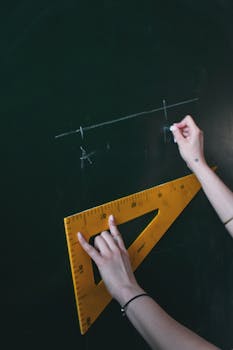What is learning outcome measurement?

What is learning outcome measurement?
Learning outcome measurement is a vital process in education that assesses how well individuals meet specific learning goals. Understanding this concept helps in enhancing educational effectiveness, promoting personal development, and even improving productivity in various contexts. So, what does measuring learning outcomes entail, and why is it crucial? Let’s explore this in detail.
Understanding Learning Outcome Measurement
Learning outcome measurement refers to the methods used to determine whether students or participants have achieved the intended learning outcomes of a course, program, or training. This process plays a significant role in evaluating educational effectiveness and ensuring that learning objectives are met.
What Are Learning Outcomes?
Learning outcomes are clear, measurable statements that describe what learners should know, be able to do, or value upon completing a learning experience. They serve as benchmarks for assessing both student performance and curriculum design. For instance, a learning outcome for a math course might state, “Students will be able to solve quadratic equations.” This clarity enables both teachers and students to focus on what’s important in the learning process.
Why Measure Learning Outcomes?
Measuring learning outcomes is essential for several reasons:
-
Accountability: Educational institutions must demonstrate that they are effectively teaching their students. Measurement provides evidence of student learning and program effectiveness, which is vital for accreditation and funding.
-
Program Improvement: By assessing learning outcomes, educators can identify areas of strength and weakness within their programs. This information can guide curriculum development and instructional strategies.
-
Enhancing Student Learning: When outcomes are measured, feedback can be provided to students, helping them understand their progress and areas for improvement. This ongoing assessment fosters a culture of continuous improvement.
For more insights on the importance of learning outcomes, you can refer to this article.
Methods of Learning Outcome Measurement
Different contexts require various methods to accurately measure learning outcomes. These can be broadly categorized into quantitative and qualitative methods.
Quantitative Methods
Quantitative assessments rely on numerical data to evaluate learning outcomes. Some common quantitative methods include:
-
Standardized Tests: These are widely used in educational settings to measure student performance against a common standard.
-
Surveys: Collecting data through structured questionnaires can provide insight into student satisfaction and engagement.
-
Analytics: Learning management systems (LMS) often have built-in analytics that track student engagement and performance, providing useful metrics for outcome measurement.
For more about quantitative methods, check out this resource.
Qualitative Methods
Qualitative assessments focus on understanding the experiences and perspectives of learners. They include:
-
Interviews: Conducting one-on-one or group interviews can yield deep insights into how students perceive their learning experiences.
-
Focus Groups: These discussions can help educators gather feedback on specific aspects of a program or course.
-
Reflective Journals: Encouraging students to keep journals provides a personal perspective on their learning journey.
Using a combination of these methods can lead to a comprehensive understanding of learning outcomes.
Developing Effective Learning Outcome Measurements
Creating effective measurements requires careful planning and alignment with learning goals.
Aligning Assessments with Learning Outcomes
To ensure assessments truly measure what students are supposed to learn, they should be directly aligned with the stated learning outcomes. For example, if a learning outcome is to “analyze data critically,” the assessment should require students to engage in data analysis tasks.
Setting Clear Criteria for Success
Defining clear criteria for what success looks like is crucial for effective measurement. This involves establishing benchmarks that are specific, measurable, achievable, relevant, and time-bound (SMART). When students know what is expected, they can better prepare and strive to meet those expectations.
Interpreting and Utilizing Data from Learning Outcome Measurement
Once data is collected, the next step is to analyze and apply it effectively.
Analyzing Measurement Data
Analyzing the data involves looking for trends, patterns, and insights that can inform teaching practices. Techniques like descriptive statistics, comparisons, and graphical representations can help educators understand the effectiveness of their programs.
Implementing Changes Based on Findings
The real power of measuring learning outcomes lies in using the findings to make informed decisions. This can lead to adjustments in teaching methods, curriculum changes, or even redesigning entire programs to better meet students’ needs.
By actively engaging with data, educators can foster a culture of continuous improvement, ensuring that learning remains dynamic and responsive.
Conclusion
Learning outcome measurement is an essential component of the educational process. It not only assesses the effectiveness of teaching methods but also drives personal and educational development. By embracing robust measurement practices, educators can ensure that their students are not just passing tests but truly mastering skills and knowledge.
As you explore the world of learning outcome measurement, consider how these practices can enhance your understanding and application of educational strategies. Whether you’re an educator, a student, or someone interested in personal development, recognizing the significance of measuring learning outcomes can lead to more effective learning experiences.